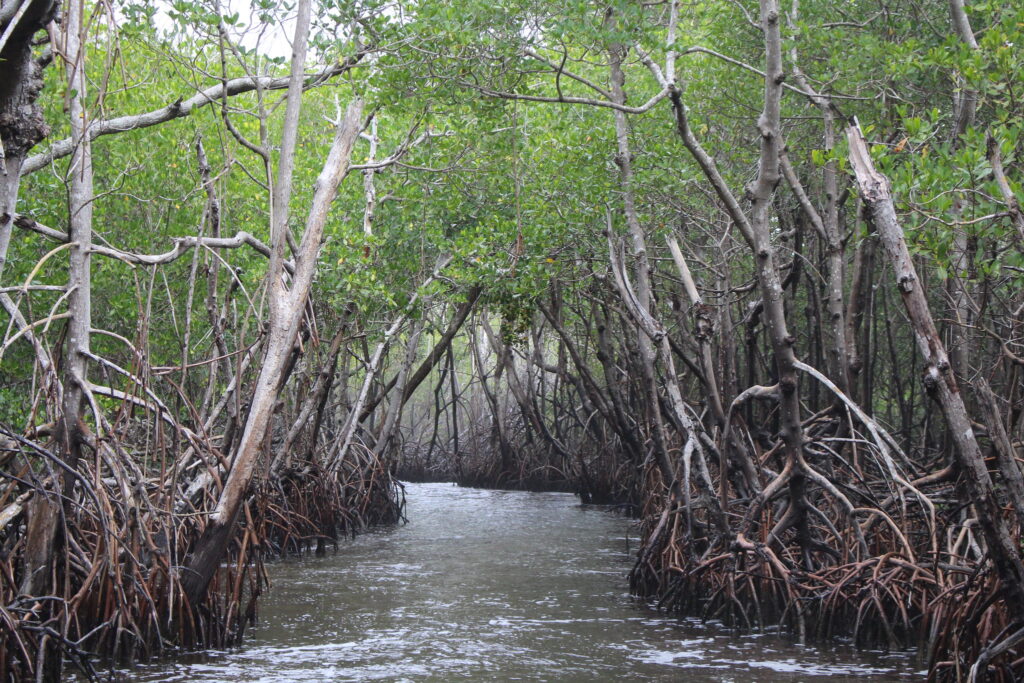
Mangrove forests play a vital role in the health of our planet. These coastal forests are the second most carbon rich ecosystems in the world. A patch of mangrove forest the size of a soccer field can store more than 1,000 tons of carbon. It does this by capturing carbon from the air and storing it in leaves, branches, trunks, and roots.
Mangrove forests only grow at tropical and subtropical latitudes near the equator because they cannot withstand freezing temperatures. These forests can be recognized by their dense tangle of prop roots that make the trees look like they are standing on stilts above the water. These roots allow the trees to handle the daily rise and fall of tides. Most mangroves get flooded at least twice a day. The roots also slow the movement of tidal waters, which allows sediments to settle out of the water and build up on the muddy bottom. Mangrove forests stabilize coastlines, reducing erosion from storms, currents, waves, and tides.
A new study by the University of Portsmouth in the UK looked at the effects of climate change on how carbon is stored in mangrove forests. In mangrove ecosystems, a variety of organisms break down fallen wood. These include fungi, beetle larvae, and termites. Closer to the ocean, clams known as shipworms degrade organic material.
Climate change is disrupting these processes in at least two ways. Rising sea levels are changing the way sediments build up and increased ocean acidity is dissolving the shells of marine organisms like shipworms.
Mangrove forests are crucial to mitigating climate change, and changes to the functioning of the carbon cycle of those ecosystems are a threat to their ability to perform that function.
**********
Web Links
Study Reveals How Climate Change Can Significantly Impact Carbon-Rich Ecosystem
Photo, posted March 24, 2014, courtesy of Daniel Hartwig via Flickr.
Earth Wise is a production of WAMC Northeast Public Radio.
Leave a Reply